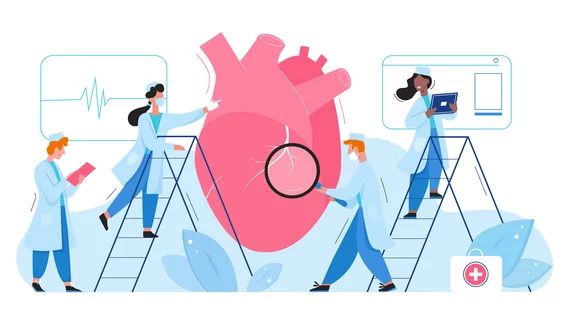10 ways to improve care for in-hospital cardiac arrest
The International Liaison Committee on Resuscitation (ILCOR), a global group focused on improving patient outcomes after in-hospital cardiac arrest (IHCA), has shared 10 steps hospitals can take to improve the quality of care IHCA patients receive at their facilities. The full document was published in Circulation: Cardiovascular Quality and Outcomes.[1]
The ILCOR, first formed back in 1992, includes representatives from the American Heart Association (AHA), European Resuscitation Council, Heart and Stroke Foundation of Canada, Australian and New Zealand Committee on Resuscitation, Resuscitation Councils of Asia, Indian Resuscitation Council Federation and International Federation of Red Cross. The organization published its list of 10 steps on Friday, Nov. 10, ahead of the AHA’s Resuscitation Science Symposium 2023 Nov. 11-12 in Philadelphia. More than 30 ILCOR members worked together to develop the list.
“Over the last 10 months, writing group members have been meeting to brainstorm, research, discuss and refine goals that reflect a global, comprehensive and practical approach to improving IHCA care,” co-author Robert Greif, MD, professor emeritus at the University of Bern in Switzerland, said in a statement. “We’re hopeful that institutions and health systems will use these steps, prioritizing them by what each system needs to achieve the highest improvements in their IHCA care. This publication is in line with ILCOR’s vision to save more lives globally through resuscitation and case studies of success, tools for implementation and teaching approaches that will follow soon.”
“Nearly 300,000 cardiac arrests occur in hospitals in the United States each year, and only about 25% of people survive to hospital discharge after these types of events,” added co-author Comilla Sasson, MD, PhD, a professor with the University of Colorado and the AHA’s vice president for health science, said in the same statement. “There is consistent evidence that the quality of care around IHCA remains suboptimal and varies across hospitals in the U.S. and in countries around the world.”
The International Liaison Committee on Resuscitation’s 10 steps for improving IHCA care:
- Build and support governance and infrastructure for a resuscitation program.
- Collect data to measure and improve resuscitation processes and outcomes.
- Implement effective education and training for resuscitation.
- Establish patient and family goals of treatment early and reassess often.
- Stop preventable in-hospital cardiac arrest.
- Develop and deploy an effective resuscitation response system.
- Deliver guideline-based resuscitation care.
- Deliver guideline-based, post-cardiac arrest care.
- Implement a person-centered culture of excellence in care.
- Ensure the well-being of healthcare professionals.
Click here to read the full document detailing these 10 steps.

